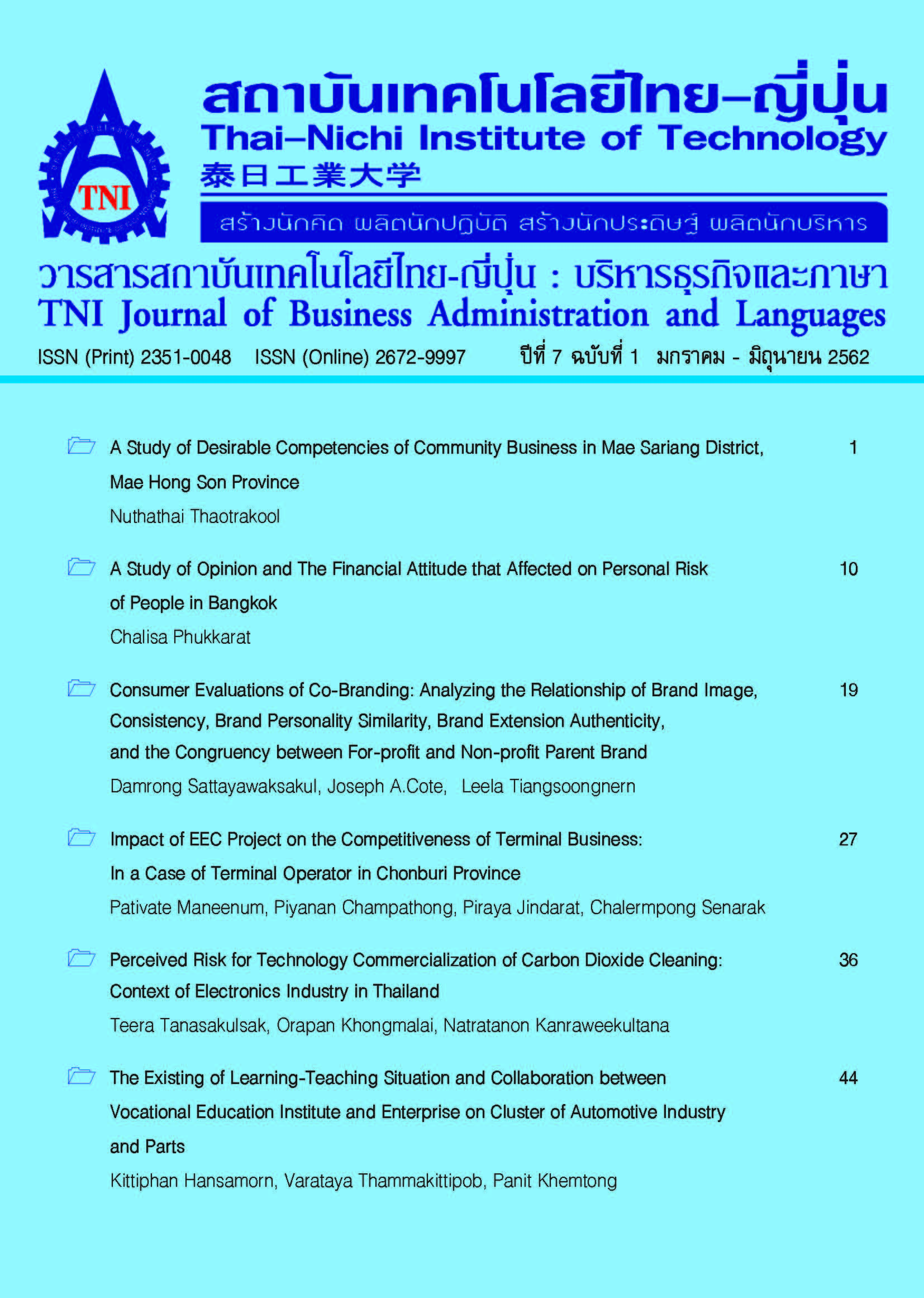Impact of EEC Project on the Competitiveness of Terminal Business: In a Case of Terminal Operator in Chonburi Province
Main Article Content
Abstract
This research is to look at How Eastern Economic Corridor (EEC) has an effect on port users in the province of Chonburi which can be divided into two groups; concessionaire and non-concessionaire. Data were collected from 4 sample ports by means of structured and in-depth interview of the 3-to-5-year experienced company executives and managers before brought into analysis.
The result says EEC influences port users from both groups in many levels of different perspectives. Industrial development increases the quantity of goods through ports that depends on their service. Infrastructure progress betters transportation and also creates competing atmosphere among the business. Utility and urbanization spread mostly support general operation of the affairs and involve less in competitiveness. Incentive expansion gives port users trade convenience and tax exemption.
Article Details
Article Accepting Policy
The editorial board of Thai-Nichi Institute of Technology is pleased to receive articles from lecturers and experts in the fields of business administration, languages, engineering and technology written in Thai or English. The academic work submitted for publication must not be published in any other publication before and must not be under consideration of other journal submissions. Therefore, those interested in participating in the dissemination of work and knowledge can submit their article to the editorial board for further submission to the screening committee to consider publishing in the journal. The articles that can be published include solely research articles. Interested persons can prepare their articles by reviewing recommendations for article authors.
Copyright infringement is solely the responsibility of the author(s) of the article. Articles that have been published must be screened and reviewed for quality from qualified experts approved by the editorial board.
The text that appears within each article published in this research journal is a personal opinion of each author, nothing related to Thai-Nichi Institute of Technology, and other faculty members in the institution in any way. Responsibilities and accuracy for the content of each article are owned by each author. If there is any mistake, each author will be responsible for his/her own article(s).
The editorial board reserves the right not to bring any content, views or comments of articles in the Journal of Thai-Nichi Institute of Technology to publish before receiving permission from the authorized author(s) in writing. The published work is the copyright of the Journal of Thai-Nichi Institute of Technology.
References
“Financial Tips,” Money and Banking, [Online]. Available: https://www.moneyandbanking.co.th/new/news/index/13. [Accessed: 21-Jan-2018].
“Infrastructure Overview,” Eastern Economic Corridor, [Online]. Available: https://www.eeco.or.th/en/content/infrastructure-overview. [Accessed: 21-Jan-2018].
United Nations Conference on Trade and Development, Strategic planning for port authorities: report. Geneva, Switzerland: United Nations Conference on Trade and Development, 1993.
J. L. Tongzon, “Port choice and freight forwarders,” Transportation Research Part E: Logistics and Transportation Review, vol. 45, no. 1, pp.186–195, 2009.
J. R. M. Gordon, P. M. Lee, and H. C. Lucas, “A resource-based view of competitive advantage at the Port of Singapore,” The Journal of StrategicInformation Systems, vol. 14, no. 1, pp. 69–86, Mar. 2005.
D.W. Song and G.T. Yeo, “A Competitive Analysis of Chinese ContainerPorts Using the Analytic Hierarchy Process,” in Port Management, H. E. Haralambides, Ed. London: Palgrave Macmillan UK, pp. 339–359, 2015.
J. L. Tongzon, and S. Ganesalingam, “An Evaluation of ASEAN PortPerformance and Efficiency,” Asian Economic Journal, vol. 8, no. 3, pp.317–330, 1994.
E. PaiPai, “Guidelines for Port Environmental Management,” Department of the Environment, Transport and the Regions, Report SR 554, Nov,1999.
C. Duangphastra and J. Rudjanakanoknad, “Selection of Key Performance Indices for Ports under the Port Authority of Thailand,” Journal of Transportation and Logistics, vol. 10, no. 1, pp. 55–65, 2017.
C. Angkuttipong, “Factors affecting the selection of marine transportation services Case study: Outbound transportation from Thailand to the United States.” Bangkok: Thammasat University, 2008.
The Thailand Research Fund, “Thai Port Development Strategy for Entrepreneurs,” Research Community, vol. 119, p. 86, 2017.
“General Information,” Port Authority of Thailand, [Online]. Available: https://www.bkp.port.co.th/bkp2007/dataeng/generalinfo.html.[Accessed: 21-Jan-2018].


